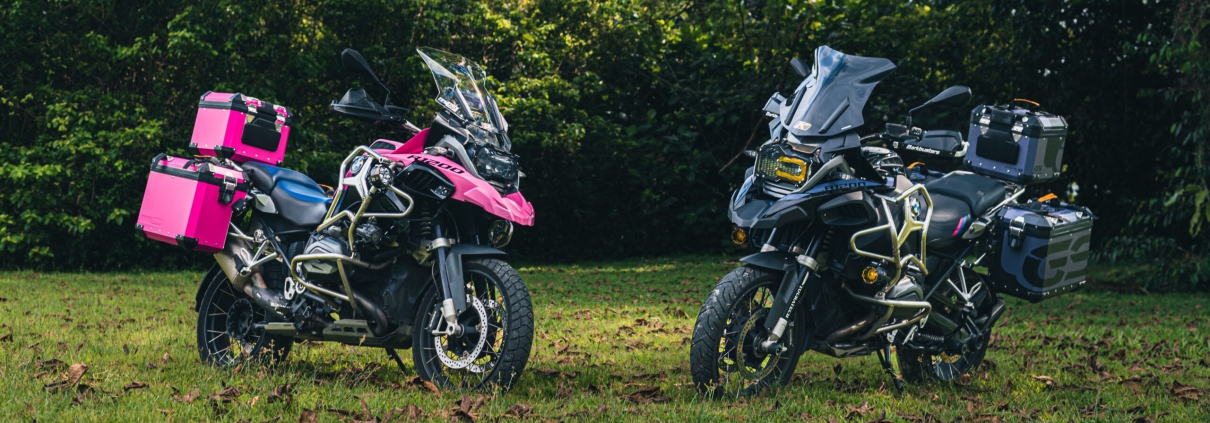Deep Cycle Motorcycle Battery: What It Means and When It Matters
When riders start searching for “deep cycle motorcycle battery,” they often assume it’s a special type of battery that delivers more power or lasts longer. In reality, most motorcycles use starting batteries, not deep cycle ones — but the distinction is worth understanding, especially if you ride frequently or rely on extra onboard electronics.
This article explains what “deep cycle” means in the motorcycle context, how it differs from traditional starter batteries, and when upgrading to a lithium battery can make a real difference.
- Understanding the Basics: Starting vs. Deep Cycle
A starting battery (or cranking battery) is designed to deliver a high burst of current for a few seconds to start the engine. Once the engine runs, the alternator takes over and recharges the battery.
By contrast, a deep cycle battery is built to discharge most of its capacity repeatedly without damage. This type of battery is common in RVs, boats, and golf carts — systems that rely on sustained energy draw rather than short bursts.
In motorcycles, deep cycle properties aren’t a primary requirement for engine ignition, but they can be beneficial in modern touring bikes that power additional loads like GPS, heated grips, cameras, and communication devices.
- Can a Motorcycle Benefit from a Deep Cycle Battery?
For most daily commuters, a standard starting battery is sufficient. However, riders who often go on long trips, use auxiliary equipment, or leave their bikes stored for extended periods may notice the benefits of a deep cycle design — especially if it’s paired with lithium chemistry.
Lithium motorcycle batteries combine the fast discharge of a starter battery with a higher cycle life similar to deep cycle batteries. They maintain voltage stability even when partially discharged and recover faster after deep use.
If you want a lightweight, durable battery with reliable deep-cycle performance, explore modern lithium motorcycle battery options like those available here:
👉 https://leochlithium.us/12v-motocycle-starts-lithium-battery-2/
These batteries integrate advanced BMS (Battery Management System) protection and support rapid recharging — ideal for both casual riders and performance enthusiasts.
- Key Advantages of a Lithium Deep Cycle Motorcycle Battery
- Extended Lifespan: Lithium batteries often last 3–5 times longer than lead-acid ones, reducing replacement frequency.
- Consistent Power Output: Voltage remains stable across discharge cycles, preventing dim lights or weak starts.
- Lightweight Design: Up to 70% lighter than traditional batteries, improving overall ride balance.
- Fast Charging: Lithium cells accept charge much faster, ideal for quick turnaround between rides.
- Low Self-Discharge: Keeps charge even during long storage periods — perfect for seasonal riders.
These benefits explain why more riders are moving away from conventional lead-acid batteries in favor of lithium-based alternatives.
- When Not to Use a Deep Cycle Battery
If your motorcycle is older or lacks advanced electronics, a deep cycle battery may not bring noticeable benefits. The primary job of your battery remains starting the engine — and for that, high cold-cranking amps (CCA) matter more than deep discharge capability.
However, if you’re planning to upgrade or replace your motorcycle battery soon, you might find this detailed guide helpful:
📖 Motorcycle Battery Replacement Guide: When, How, and What to Choose
It explains the replacement process, compatibility concerns, and how to choose between AGM, gel, and lithium types.
- AGM vs. Lithium: Which Makes a Better Deep Cycle Option?
AGM (Absorbent Glass Mat) batteries were once the go-to upgrade from flooded lead-acid models. They’re sealed, maintenance-free, and handle vibration better — but they still degrade faster under deep discharge cycles.
Lithium batteries, on the other hand, excel in both energy density and cycling performance, offering thousands of charge-discharge cycles without capacity loss.
If you’re still considering whether AGM remains a viable choice, this in-depth analysis may help:
📖 AGM Motorcycle Batteries — Are They Still a Reliable Choice in 2025?
- Choosing the Right Battery for Your Riding Style
| Riding Style | Recommended Battery Type | Key Benefit |
| Daily commuting | Standard lithium starter | Reliable ignition, low weight |
| Long-distance touring | Lithium deep cycle | Supports auxiliary loads |
| Seasonal or occasional use | Lithium with low self-discharge | Maintains charge in storage |
| Vintage bikes | AGM or traditional | Easier compatibility |
In short:
- If you prioritize starting power, focus on CCA ratings.
- If you prioritize longevity and multi-cycle performance, look for deep-cycle capable lithium batteries.
- Final Thoughts
So, is a deep cycle motorcycle battery necessary?
Not always — but when you demand more from your bike’s electrical system, it becomes a smart investment.
Modern lithium motorcycle batteries now deliver both starting reliability and deep-cycle resilience, bridging the gap between power and endurance. For riders who value lighter weight, fast charging, and long service life, upgrading to a lithium deep cycle model is one of the most practical ways to future-proof your motorcycle’s performance.
👉 Learn more about available options and specifications here: https://leochlithium.us/12v-motocycle-starts-lithium-battery-2/


